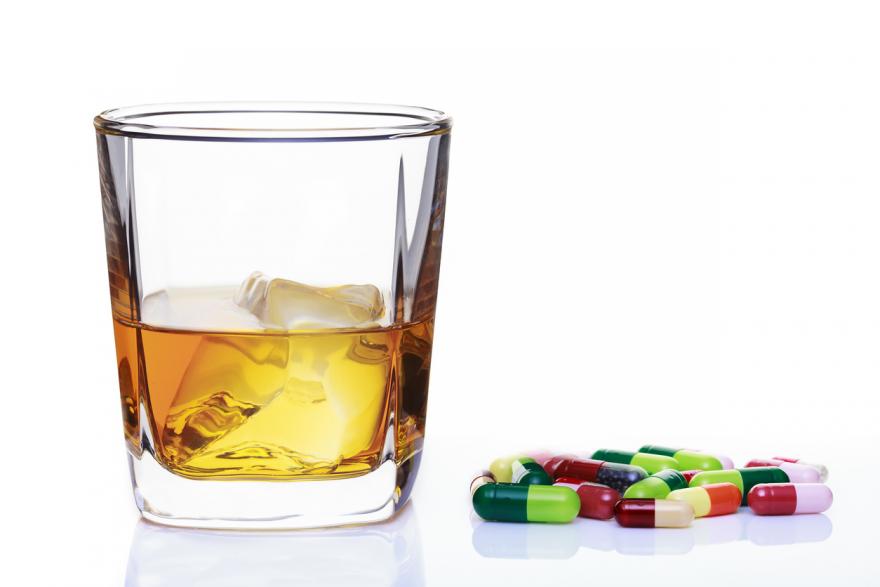The length of time drugs and alcohol can be detected in your system for depends on a range of factors, including the type of test used, how much has been consumed, the strength of the substance, and the frequency of use.
There is a range of samples that can be tested for drug and alcohol misuse; urine, blood, hair and nails specimen, each of these tests have a different detection period, showing from as little as 10 hours up to a year.
The most common types of tests used to detect alcohol and drugs are:
Urine test
Testing urine for drug and alcohol use is a quick, non-invasive procedure that can often provide instant results. Alcohol can be detected in urine within less than 60 minutes after consumption, and its maximum concentration is reached after 5.5 hours. Depending on the amount of alcohol, the detection period when using urine is from 24-80 hours after consumption. Ethyl glucuronide (EtG) in urine can be detected for up to 5 days.
The detection period for drugs in urine ranges depending on the type of drug ingested, for example, cocaine can be detected up to 3 days after use, heroin up to 5 days, and ecstasy up to 4 days. Feel free to check the table below to get a better understanding of drugs in the urine detection window or get in touch with DNA Legal.
Blood Test
Depending on the type of blood test used, the detection periods for alcohol can range from only a few hours to up to six weeks. Testing for phosphatidylethanol (PEth) is the most accurate blood test to determine any alcohol consumption (abstenism or excessive abuse), and the accepted period of detection is up to 28 days, however, the greater the exposure, the longer the period of detection. Carbohydrate-deficient Transferrin (CDT), Liver Function Test (LFT) and Full Blood Count (Mean Conspicuous Volume - MCV) can also be used to monitor chronic excessive alcohol consumption.
Similar to urine, drug detection periods in blood vary, from hours to a few days, depending on the type of drug ingested, purity of the used drug, metabolic rate etc, please get in touch for a breakdown of each detection period.
Breathalyser
A breathalyser test measures the blood alcohol content (BAC) in your breath and is the easiest on-the-spot method to detect recent alcohol use. The detection period depends on how much alcohol you have consumed and how your body metabolises or processes alcohol. It is estimated that the average person will breakdown alcohol at a rate of 0.0015 BAC per hour, therefore, if your BAC is 0.030, it would take two hours for all traces of alcohol to leave your system.
Hair Test
Testing a hair sample can provide the longest detection period for both alcohol and drugs. A hair sample allows us to trace alcohol usage for up to 3 or 6 months and can detect drug over a period of up to one year. The detection period will be determined by the length of hair, on average hair grows at 1cm per month, therefore 6cm of hair can be tested for alcohol or drugs covering a 6-month history.
Fingernail Test
A lesser-known method of alcohol and drug testing is fingernail testing. Nail testing is a reliable way to test for drugs and alcohol abuse and has been published by several peer-reviewed research papers (example)
A fingernail test provides a 3-6-month (6-12 for toenails) history of drug or alcohol abuse. This type of test is often used when a participant has limited or no hair. The advantage of nail testing over hair is that it is a robust matrix which is less exposed to processes that can affect the validity of the outcome such as hair chemical treatment (hair dye/bleach), allowing for an efficient and accurate conclusion. Like hair, fingernails and toenails are made of keratin. Hair and nails provide samples that are simple to both collect and transport while offering a longer window of detection.
The window of detection of drugs in Blood, Urine and Hair
| Drug | URINE / Days | BLOOD / Hours |
|---|---|---|
|
Cannabinoids Moderate Heavy Chronic |
3 days 10 days 15 days |
48-120 hours |
| Cocaine | 1-3 days | 48 Hours |
| Amphetamine and Methamphetamines | 2- 4 days | 24-48 hours |
| Heroin | 1-2 days |
20 hours |
|
Morphine |
1-2 days | 24 hours |
|
Methadone |
2-5 days | 25 hours |
|
Benzodiazepines Long-Acting Intermediate Acting Short-Acting |
10 days 5 days 1-2 days |
24-48 hours |
|
LSD |
1-2 days | 12 hours |
|
Ketamine |
2-4 days | 10 hours |
|
Tramadol |
3-5 days | 20-40 hours |
For hair, it will take approximately 14 days for the consumed drug to be detectable in hair. Taking the average growth rate suggested by the Society of Hair testing into consideration, each 1cm of head hair will represent a 1 month period, for example, if 3 cm of hair were tested, this will represent 3 months period.
The detection periods can be varied depending on the frequency of use/abuse (moderate or chronic), age, body mass, metabolic rate and other factors (Dr Salah E. Breidi, PhD, MSc, BSc).
DNA Legal and Drug and Alcohol Testing
DNA Legal provide fully accredited drug and alcohol testing, offering blood, hair, and fingernail testing, for the UK Police, Regulatory Organisations and Local Authorities for over 2,500 drugs, including specialist drugs, prescription drugs, and new psychoactive substances. Please get in touch for more information or read our pages on drug and alcohol testing.

